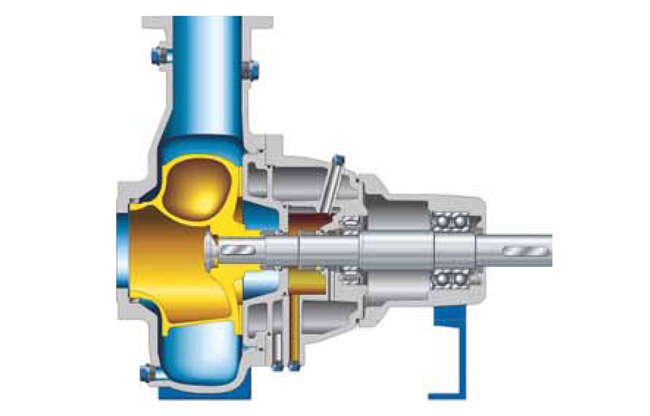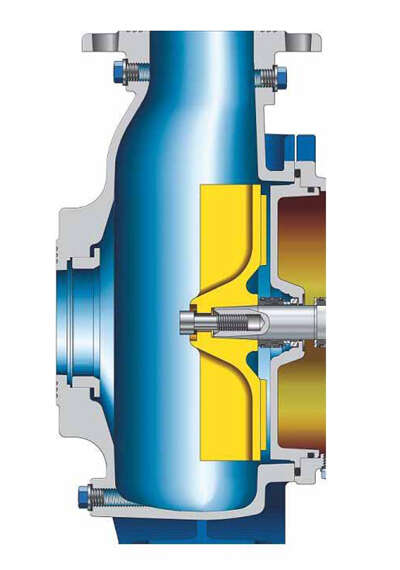Sewage pump
Sewage pumps transport sewage and untreated waste water (e.g. raw waste water). They are most commonly used in municipal waste water treatment plants but also in buildings and private homes (also see Sewage lifting unit), which cannot be connected to the municipal sewer due to the natural slope of the terrain.
Types of sewage pumps
- Pumps for dry installation with single-vane impeller
See Fig. 1 Sewage pump - Submersible motor pumps (vertical installation) with single-vane impeller
siehe See Fig. 2 Sewage pump - Close-coupled pumps (ready-to-connect package systems)
See Fig. 1 Sewage pump - Torque flow pumps with free-flow impeller
See Fig. 3 Sewage pump - Pumps with diagonal impeller
See Fig. 4 Sewage pump

Fig. 1 Sewage pump: Dry-installed, with single-vane impeller

Fig. 2 Sewage pump: Submersible motor pump with channel impeller

Fig. 3 Sewage pump: With free-flow impeller

Fig. 4 Sewage pump: With diagonal impeller
The requirements for sewage lifting units are identical with those for waste water pumps. Clogging, for example, must also be prevented in sewage lifting units, even if solids contents are high. This is why they are fitted with special impellers such as single-vane or diagonal impellers.
The axial thrust is balanced by back vanes. Single or double mechanical seals are used as a shaft seal. Sewage lifting units are usually not self-priming.
To prevent wear sewage lifting units are designed with replaceable wear-resistant components (e.g. casing wear ring, wear plate, impeller wear ring), depending on the solids content (see Solids transport).
The axial thrust is balanced by back vanes. Single or double mechanical seals are used as a shaft seal. Sewage lifting units are usually not self-priming.
To prevent wear sewage lifting units are designed with replaceable wear-resistant components (e.g. casing wear ring, wear plate, impeller wear ring), depending on the solids content (see Solids transport).
